After you’ve worked long and hard all summer you want to make sure your bounty lasts more than a couple of weeks and nothing goes to waste. We’ve tried a couple of different methods over the years but, so far found that storing our excess of beets and carrots in sand has worked the best for us. If you’re like us we love eating fresh beets and carrots in our meals and usually plant an abundant since they’re so easy to grow. We also have been trying to make sure all of our food is “Organic” which can get a little pricey. This way having a winter long supply of beets and carrots helps us to keep grocery costs low as well.
We always like to try different varieties and once they start growing just pick them out of the garden all summer long. The longer you let beets grow the less tender and more fibrous they’ll get but they still taste good especially diced up in a meal. Ideally you should be harvesting when the greens of the plants are between four and six inches, that’s when they’ll be most tender. The beetroots of the beets will be about one and a quarter to two inches in diameter at this time and it’s a prime size for pickling and storing beets.
When it comes to storing your beets and carrots it’s a really easy thing to do, so you can enjoy them all winter long. We’ve been using an 18 gallon Rubbermaid container that so far has worked just fine but I’m sure you could use some type of wooden box or canvas container to store them in as well.
When you go to harvest your beets and carrots it can be somewhat difficult to just pull them from the ground without damaging your crop. Beets are a lot easy to just pull out than carrots so we usually use a pitchfork to pry up the ground around the carrots and help them out of the soil. Remember to eat, discard or compost damaged ones because they’ll spoil quickly if you try to store them for the winter.
After you’ve harvested all your beets and carrots you can brush them off or rinse them if you’d like, we usually don’t too much and just wait until we’re ready to cook them till we clean them. You should then remove the tops of both the beets and carrots because they’ll pull moisture. After that you just line them up in rows in the sand layering them until you’re done. Keep in mind that with all this sand your 18 gallon container is gonna get pretty heavy, so you might want to do this near its final resting place.
Try and store them in a cool place like a cellar, basement or garage. If they dry out they’ll split and won’t taste so good and if they get too wet they’ll rot. It’s kind of a delicate balance, but if you keep checking on them and using them often they should be fine. Either way they’ll last a lot longer then if you just left them out.
We harvested and stored our beets and carrots at the beginning of October. Right now it’s the middle of February. Today I took a few of them out to put with our dinner and they were still very firm and just as tasty as when we took them out of the ground in the fall. I can’t believe we’ve had these in storage for 5 months and they’re still edible and delicious! I hope this post helps anyone looking to enjoy their crop year round and as always feel free to contact us with questions or tips.

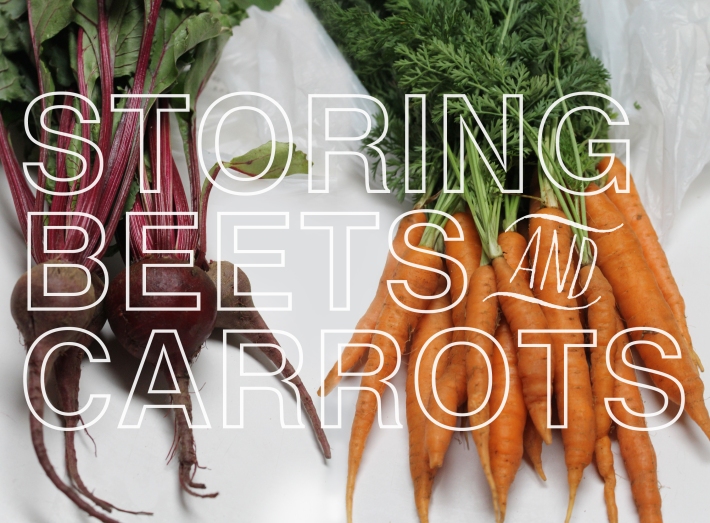
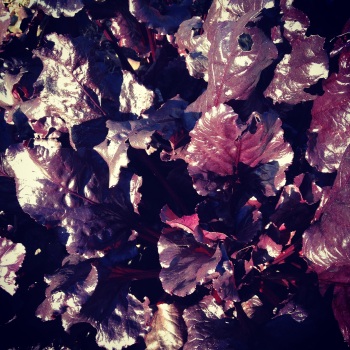




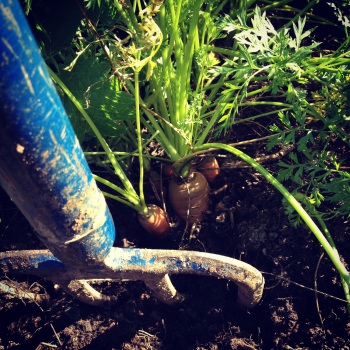
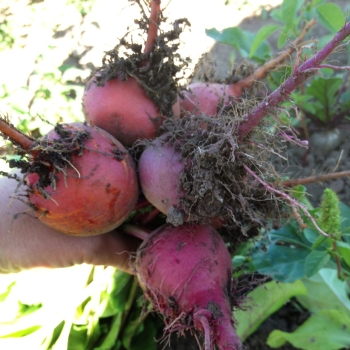

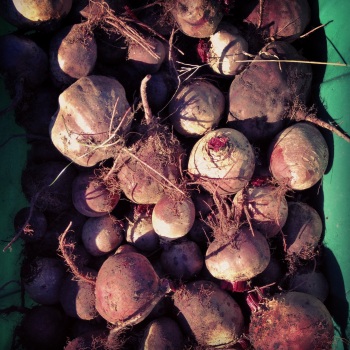
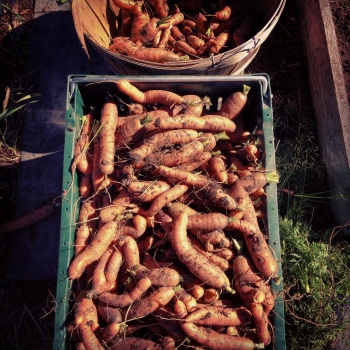


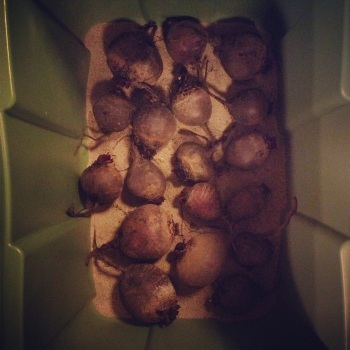



Awesome post!